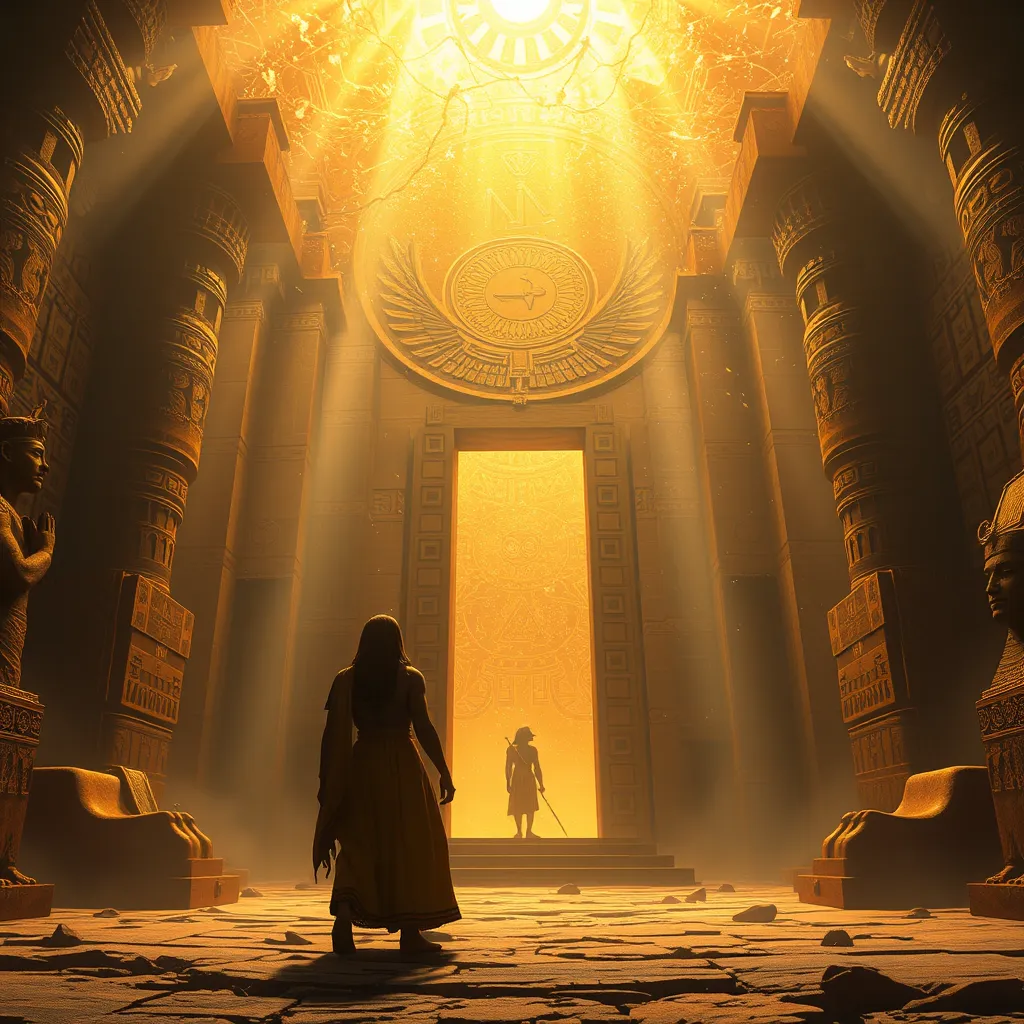The Duat: Unveiling the Secrets of the Beyond
1. Introduction to the Duat
The Duat, often referred to as the Egyptian underworld, holds a significant place in ancient Egyptian mythology. It is a realm where the souls of the deceased would traverse after death, facing various challenges as they sought to reach the afterlife. This mystical dimension embodies the ancient Egyptians’ beliefs about existence beyond the mortal world and reflects their understanding of life, death, and the cosmos.
In ancient Egypt, the concept of the afterlife was central to their spiritual beliefs. It was not merely a continuation of life but a transformation into a different state of being, where the soul could attain eternal peace and happiness. The Duat served as a crucial intermediary space, where souls would undergo trials and judgments before reaching their final destination.
2. Historical Origins of the Duat
The earliest references to the Duat can be traced back to the Pyramid Texts, which date as far back as the Old Kingdom (circa 2686–2181 BCE). These texts provided insights into the beliefs surrounding the afterlife and outlined the journey of the deceased through the Duat.
As Egypt evolved, so did the concept of the Duat. During the Middle Kingdom (circa 2055–1650 BCE) and the New Kingdom (circa 1550–1070 BCE), there was a marked expansion in the literature and depictions related to the Duat. This evolution reflected the changing attitudes towards death and the afterlife, with an increasing emphasis on personal judgment and the moral implications of one’s life.
3. Geographical and Cosmological Aspects of the Duat
The Duat is often depicted as a complex, multi-layered landscape. It includes:
- Dark tunnels and caverns
- Fiery lakes and rivers
- A paradise known as the Field of Reeds
The landscape of the Duat was believed to be filled with various obstacles and divine beings. Stars, gods, and celestial bodies played critical roles in this realm, guiding and influencing the souls’ passage. For instance, the stars were often seen as the souls of the deceased who had successfully navigated the Duat, shining down on the living.
4. Deities and Spirits of the Duat
Numerous deities and spirits inhabit the Duat, each playing a pivotal role in the journey of souls. Some of the key figures include:
- Osiris: The god of the afterlife and resurrection, he presides over the judgment of souls.
- Anubis: The god of embalming and the protector of graves, he guides souls through the Duat and oversees the weighing of the heart.
- Ma’at: The goddess of truth and justice, she represents the moral order of the universe and is integral to the judgment process.
These deities were not merely symbolic but were believed to actively participate in the process of guiding and judging the souls, ensuring that the deceased were treated with the justice they deserved.
5. The Journey Through the Duat
The journey through the Duat is fraught with trials and tribulations. After death, the soul embarks on a journey that includes several stages:
- The departure from the body and the initial meeting with Anubis.
- The traversing of dark passages filled with dangers and obstacles.
- The encounter with various gods and monsters that test the soul’s worthiness.
- The final arrival at the Hall of Ma’at for judgment.
Throughout this journey, the deceased faced numerous challenges, including navigating through a landscape inhabited by hostile creatures and overcoming illusions that could lead them astray.
6. Judgment and the Weighing of the Heart
One of the most critical aspects of the Duat is the judgment ceremony, where the soul’s heart is weighed against the feather of Ma’at, symbolizing truth and justice. This ceremony is a pivotal moment in the journey:
- If the heart is lighter than the feather, the soul is deemed virtuous and can enter the Field of Reeds.
- If the heart is heavier, it indicates a life filled with wrongdoing, and the soul faces annihilation by the devouring monster Ammit.
This weighing of the heart reflects the moral principles that governed ancient Egyptian society and underscores the significance of living a righteous life.
7. Artifacts and Texts Related to the Duat
Numerous artifacts and ancient texts provide insights into the beliefs surrounding the Duat. Key examples include:
- Pyramid Texts: Found in the burial chambers of pyramids, these texts contain spells and incantations to assist the deceased in their journey.
- Coffin Texts: Similar to the Pyramid Texts, these were inscribed on coffins and offered guidance to the deceased.
- Book of the Dead: A compilation of spells, prayers, and guidelines for navigating the Duat, aimed at helping the deceased achieve a successful afterlife.
Archaeological discoveries, including tombs and burial artifacts, have shed light on the rituals and beliefs associated with the Duat, illustrating the ancient Egyptians’ deep-seated beliefs in the afterlife.
8. Legacy and Influence of the Duat in Modern Culture
The Duat continues to fascinate and influence modern culture. Its themes of life, death, and the afterlife resonate in various forms of contemporary media:
- Literature: Authors often draw on Duat themes to explore concepts of mortality and the afterlife.
- Film: Movies such as “The Mummy” and animated features depict the Duat and its mythological elements.
- Art: Modern artists reference the Duat in their works, exploring the mysteries of existence.
This ongoing intrigue reflects the enduring impact of ancient Egyptian beliefs on our understanding of life and death.
9. Conclusion: The Enduring Mystery of the Duat
The Duat serves as a profound symbol of ancient Egyptian beliefs regarding the afterlife, illustrating their understanding of morality, judgment, and the journey of the soul. Its significance extends beyond antiquity, capturing the imagination of modern society and influencing contemporary interpretations of the afterlife.
As we continue to explore the mysteries of the Duat, we are reminded of the universal quest for understanding what lies beyond death, reflecting our own beliefs and fears regarding the unknown.




